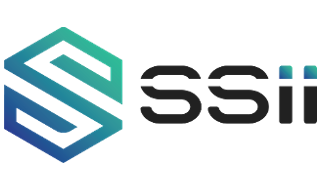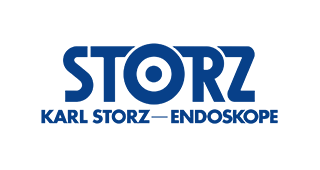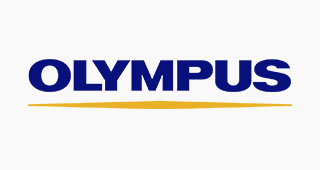SIU-WJU Article of the Month – May 2019
Collaborative efforts to validate and improve simulation-based training and assessment of endoscopic skills
SIU Academy®. Lee J. 05/01/19; 267511
Topic: Fundamentals of endoscopic, laparoscopic and robotic urologic surgeryCollaborative efforts to validate and improve simulation-based training and assessment of endoscopic skills
CLICK HERE TO LOGIN
REGULAR CONTENT
REGULAR CONTENT
Login now to access Regular content available to all registered users.
To have an exclusive access to the entire content available on SIU Academy, become an SIU Member here.
To have an exclusive access to the entire content available on SIU Academy, become an SIU Member here.
Abstract
Discussion Forum (0)
Rate & Comment (0)
Introduction
The endoscopic stone treatment step 1 (EST s1) protocol has been developed after 2 years of collaborative work between different European Association of Urology (EAU) sections.
Objectives
In this study, we added construct validity evidence to the EST s1 curriculum.
Materials and methods
The EST-s1 curriculum includes four standardized tasks: flexible cystoscopy, rigid cystoscopy, semi-rigid URS and flexible URS. Validation was performed during the annual 2016 EUREP meeting in Prague. 124 participants provided information on their endoscopic logbook and carried out these 4 tasks during a DVD recorded session. Recordings were anonymized and blindly assessed independently by five proctors. Inter-rater reliability was checked on a sample of five videos by the calculation of intra-class correlation coefficient. Task-specific clinical background of participants was correlated with their personal performance on the simulator. Breakpoint analysis was used to define the minimum number of performed cases, to be considered “proficient”. “Proficient” and “Non-proficient” groups were compared for construct validity assessment. Likert scale-based questionnaires were used to test content and to comment on when the EST-s1 exams should be undertaken within the residency program.
Results
124 participants (105 final-year residents and 19 faculty members) took part in this study. The breakpoint analysis showed a significant change in performance curve at 36, 41, 67 and 206 s, respectively, corresponding to 30, 60, 25 and 120 clinical cases for each of the 4 tasks. EST-s1 was scored as a valid training tool, correctly representing the procedures performed in each task. Experts felt that this curriculum is best used during the third year of residency training.
Conclusion
Our validation study successfully demonstrated correlation between clinical expertise and EST-s1 tasks, adding construct validity evidence to it. Our work also demonstrates the successful collaboration established within various EAU sections.
Keywords
Stone treatment Training EST-s1 Hands-on training Education Curriculum Training protocol
Abbreviations
EAU - European Association of Urology
HoT - Hands-on training
YAU - Young Academic Urologists
EUREP - European Urology Residents Education Programme
EST-s1 - Endoscopic stone treatment step 1 (curriculum)
ESU - European School of Urology
ESUT - European Section of Uro-Technology
EULIS - European Section of Urolithiasis
URS - Uretero-renoscopy
SD - Standard deviation
The members of ESU Training Group are listed in Acknowledgements.
Suggested tweet
The novel EST s1 training curriculum is a valid tool to certify proficient mastery of the basic endoscopic skills.
Patients summary
In this study we validated the novel basic training curriculum for Endoscopic Stone Treatment, called EST-s1, developed after 2 years of collaborative work inside the EAU. We found that our curriculum is valid to certify proficiency of the basic endoscopic skills. The protocol is now established as a standard tool to certify proficiency of the basic endoscopic skills in Europe, with potential of worldwide adoption in the future.
Take home message
Our study successfully added face and construct validity to EST-s1 tasks. The protocol is now established as a standard tool to certify proficiency of the basic endoscopic skills in Europe, with potential of worldwide adoption in the future.
The endoscopic stone treatment step 1 (EST s1) protocol has been developed after 2 years of collaborative work between different European Association of Urology (EAU) sections.
Objectives
In this study, we added construct validity evidence to the EST s1 curriculum.
Materials and methods
The EST-s1 curriculum includes four standardized tasks: flexible cystoscopy, rigid cystoscopy, semi-rigid URS and flexible URS. Validation was performed during the annual 2016 EUREP meeting in Prague. 124 participants provided information on their endoscopic logbook and carried out these 4 tasks during a DVD recorded session. Recordings were anonymized and blindly assessed independently by five proctors. Inter-rater reliability was checked on a sample of five videos by the calculation of intra-class correlation coefficient. Task-specific clinical background of participants was correlated with their personal performance on the simulator. Breakpoint analysis was used to define the minimum number of performed cases, to be considered “proficient”. “Proficient” and “Non-proficient” groups were compared for construct validity assessment. Likert scale-based questionnaires were used to test content and to comment on when the EST-s1 exams should be undertaken within the residency program.
Results
124 participants (105 final-year residents and 19 faculty members) took part in this study. The breakpoint analysis showed a significant change in performance curve at 36, 41, 67 and 206 s, respectively, corresponding to 30, 60, 25 and 120 clinical cases for each of the 4 tasks. EST-s1 was scored as a valid training tool, correctly representing the procedures performed in each task. Experts felt that this curriculum is best used during the third year of residency training.
Conclusion
Our validation study successfully demonstrated correlation between clinical expertise and EST-s1 tasks, adding construct validity evidence to it. Our work also demonstrates the successful collaboration established within various EAU sections.
Keywords
Stone treatment Training EST-s1 Hands-on training Education Curriculum Training protocol
Abbreviations
EAU - European Association of Urology
HoT - Hands-on training
YAU - Young Academic Urologists
EUREP - European Urology Residents Education Programme
EST-s1 - Endoscopic stone treatment step 1 (curriculum)
ESU - European School of Urology
ESUT - European Section of Uro-Technology
EULIS - European Section of Urolithiasis
URS - Uretero-renoscopy
SD - Standard deviation
The members of ESU Training Group are listed in Acknowledgements.
Suggested tweet
The novel EST s1 training curriculum is a valid tool to certify proficient mastery of the basic endoscopic skills.
Patients summary
In this study we validated the novel basic training curriculum for Endoscopic Stone Treatment, called EST-s1, developed after 2 years of collaborative work inside the EAU. We found that our curriculum is valid to certify proficiency of the basic endoscopic skills. The protocol is now established as a standard tool to certify proficiency of the basic endoscopic skills in Europe, with potential of worldwide adoption in the future.
Take home message
Our study successfully added face and construct validity to EST-s1 tasks. The protocol is now established as a standard tool to certify proficiency of the basic endoscopic skills in Europe, with potential of worldwide adoption in the future.
Introduction
The endoscopic stone treatment step 1 (EST s1) protocol has been developed after 2 years of collaborative work between different European Association of Urology (EAU) sections.
Objectives
In this study, we added construct validity evidence to the EST s1 curriculum.
Materials and methods
The EST-s1 curriculum includes four standardized tasks: flexible cystoscopy, rigid cystoscopy, semi-rigid URS and flexible URS. Validation was performed during the annual 2016 EUREP meeting in Prague. 124 participants provided information on their endoscopic logbook and carried out these 4 tasks during a DVD recorded session. Recordings were anonymized and blindly assessed independently by five proctors. Inter-rater reliability was checked on a sample of five videos by the calculation of intra-class correlation coefficient. Task-specific clinical background of participants was correlated with their personal performance on the simulator. Breakpoint analysis was used to define the minimum number of performed cases, to be considered “proficient”. “Proficient” and “Non-proficient” groups were compared for construct validity assessment. Likert scale-based questionnaires were used to test content and to comment on when the EST-s1 exams should be undertaken within the residency program.
Results
124 participants (105 final-year residents and 19 faculty members) took part in this study. The breakpoint analysis showed a significant change in performance curve at 36, 41, 67 and 206 s, respectively, corresponding to 30, 60, 25 and 120 clinical cases for each of the 4 tasks. EST-s1 was scored as a valid training tool, correctly representing the procedures performed in each task. Experts felt that this curriculum is best used during the third year of residency training.
Conclusion
Our validation study successfully demonstrated correlation between clinical expertise and EST-s1 tasks, adding construct validity evidence to it. Our work also demonstrates the successful collaboration established within various EAU sections.
Keywords
Stone treatment Training EST-s1 Hands-on training Education Curriculum Training protocol
Abbreviations
EAU - European Association of Urology
HoT - Hands-on training
YAU - Young Academic Urologists
EUREP - European Urology Residents Education Programme
EST-s1 - Endoscopic stone treatment step 1 (curriculum)
ESU - European School of Urology
ESUT - European Section of Uro-Technology
EULIS - European Section of Urolithiasis
URS - Uretero-renoscopy
SD - Standard deviation
The members of ESU Training Group are listed in Acknowledgements.
Suggested tweet
The novel EST s1 training curriculum is a valid tool to certify proficient mastery of the basic endoscopic skills.
Patients summary
In this study we validated the novel basic training curriculum for Endoscopic Stone Treatment, called EST-s1, developed after 2 years of collaborative work inside the EAU. We found that our curriculum is valid to certify proficiency of the basic endoscopic skills. The protocol is now established as a standard tool to certify proficiency of the basic endoscopic skills in Europe, with potential of worldwide adoption in the future.
Take home message
Our study successfully added face and construct validity to EST-s1 tasks. The protocol is now established as a standard tool to certify proficiency of the basic endoscopic skills in Europe, with potential of worldwide adoption in the future.
The endoscopic stone treatment step 1 (EST s1) protocol has been developed after 2 years of collaborative work between different European Association of Urology (EAU) sections.
Objectives
In this study, we added construct validity evidence to the EST s1 curriculum.
Materials and methods
The EST-s1 curriculum includes four standardized tasks: flexible cystoscopy, rigid cystoscopy, semi-rigid URS and flexible URS. Validation was performed during the annual 2016 EUREP meeting in Prague. 124 participants provided information on their endoscopic logbook and carried out these 4 tasks during a DVD recorded session. Recordings were anonymized and blindly assessed independently by five proctors. Inter-rater reliability was checked on a sample of five videos by the calculation of intra-class correlation coefficient. Task-specific clinical background of participants was correlated with their personal performance on the simulator. Breakpoint analysis was used to define the minimum number of performed cases, to be considered “proficient”. “Proficient” and “Non-proficient” groups were compared for construct validity assessment. Likert scale-based questionnaires were used to test content and to comment on when the EST-s1 exams should be undertaken within the residency program.
Results
124 participants (105 final-year residents and 19 faculty members) took part in this study. The breakpoint analysis showed a significant change in performance curve at 36, 41, 67 and 206 s, respectively, corresponding to 30, 60, 25 and 120 clinical cases for each of the 4 tasks. EST-s1 was scored as a valid training tool, correctly representing the procedures performed in each task. Experts felt that this curriculum is best used during the third year of residency training.
Conclusion
Our validation study successfully demonstrated correlation between clinical expertise and EST-s1 tasks, adding construct validity evidence to it. Our work also demonstrates the successful collaboration established within various EAU sections.
Keywords
Stone treatment Training EST-s1 Hands-on training Education Curriculum Training protocol
Abbreviations
EAU - European Association of Urology
HoT - Hands-on training
YAU - Young Academic Urologists
EUREP - European Urology Residents Education Programme
EST-s1 - Endoscopic stone treatment step 1 (curriculum)
ESU - European School of Urology
ESUT - European Section of Uro-Technology
EULIS - European Section of Urolithiasis
URS - Uretero-renoscopy
SD - Standard deviation
The members of ESU Training Group are listed in Acknowledgements.
Suggested tweet
The novel EST s1 training curriculum is a valid tool to certify proficient mastery of the basic endoscopic skills.
Patients summary
In this study we validated the novel basic training curriculum for Endoscopic Stone Treatment, called EST-s1, developed after 2 years of collaborative work inside the EAU. We found that our curriculum is valid to certify proficiency of the basic endoscopic skills. The protocol is now established as a standard tool to certify proficiency of the basic endoscopic skills in Europe, with potential of worldwide adoption in the future.
Take home message
Our study successfully added face and construct validity to EST-s1 tasks. The protocol is now established as a standard tool to certify proficiency of the basic endoscopic skills in Europe, with potential of worldwide adoption in the future.
Code of conduct/disclaimer available in General Terms & Conditions
{{ help_message }}
{{filter}}







